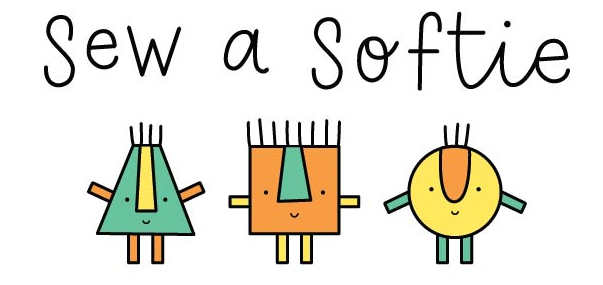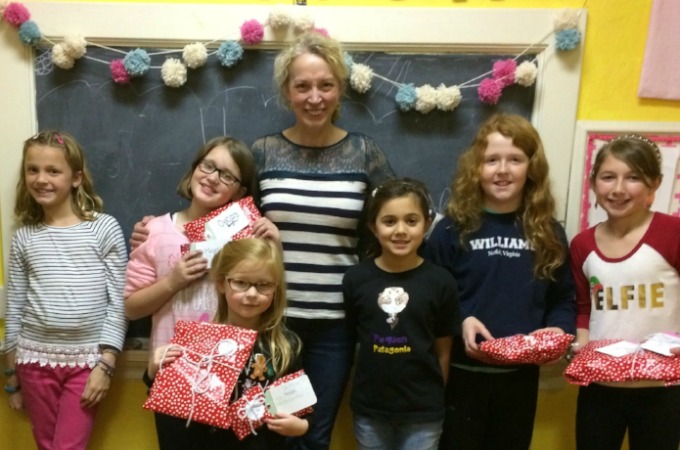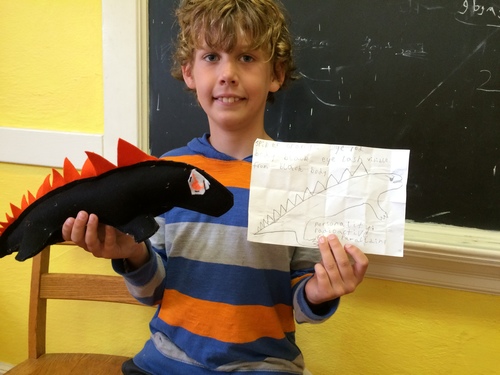Today’s interview looks at sewist and sewing teacher Hilarie Dayton who lives in the USA. Having grown up with sewing, she has found all sorts of creative and practical ways to put her sewing skills to good use and eventually established Little Stitch Studio. You can find Hilarie at Little Stitch Studio.
What age are the kids you teach?
I teach kids and adults of all ages. However, my weekly after school classes are targeted to 6-14 year olds.
How long have you been teaching sewing?
I’ve been teaching for two years.
Can you tell me a little about yourself?
As a very small child, I began to learn to sew. My grandmother always had an array of projects she was working on and happy to have me next to her. I spent hours making clothes and elaborate furnishings for my dolls, Barbies and myself! My grandmother owned a plant nursery and would sell dolls and crafts that she and her friends had made in the shop. Occasionally she let me sell my things as well.
As I grew, so did my sewing interest and ability. In college, I found use for my sewing skills in the theater department’s costume shop. When I couldn’t find the right pattern, I would intuitively make my own from existing garments. After college, I had a line of women’s clothing and accessories that I designed, manufactured and sold in boutiques. Now I have a couple of kids who love to make things. They want to learn how to make everything and I found that many of their friends do too. As more and more kids asked to come over and sew with us, creating Little Stitch Studio seemed a natural progression.
I offer a fun and creative space to learn sewing and design techniques in a relaxed atmosphere. Projects vary from sewing stuffed animals, room decorations, accessories and clothing. Your child’s imagination can soar at Little Stitch Studio!
Do you have any tips or tricks that you’ve found helpful in teaching kids to hand sew?
I love to teach kids to handsew with felt and embroidery floss. I begin by cutting a square and using chalk or a Frixion pen and drawing dashed lines around the perimeter of the felt, (each line is about 1/2” long). We thread the needle and leave a long “tail” beneath the knot. With the threaded needle under the felt, I begin telling a story of a little mermaid that is just learning to dive and swim. She is going to practice by shooting up from underneath the water (the fabric on the first dashed line) then just as her tail reaches the surface (when they feel the knot reach the fabric) she turns and points herself right back into the water. Before she does that though, she needs to stop and plug her nose (I have the kids pinch the eye of the threaded needle and pierce the fabric through the other side of the line). Then we keep practicing. There are always lots of knots and loops but they get it.
Also I make sure that the floss is no longer than the length of the child’s wrist to elbow and I let them choose the color of their felt and floss. Kids love to pick their own color combinations.
Have you had any students you can tell me about whom learning to sew really benefitted in some way?
Most of the girls that take sewing with me tend to be really creative and “into” art, fashion and design. While some play sports, many of them are looking for “their thing”. They love this time of creativity and friendship. I would have loved to have a class like this when I was a kid!
Is there any tool that you find particularly useful to use in your classes?
For a beginning sewer, I find a sewing machine with speed control super helpful. Once the girls see how slow the machine can go, they are less intimidated. In just a few weeks time, many of them have slid the control to a normal speed and feel very confident.




I’m enjoying this series.
Amalia
xo